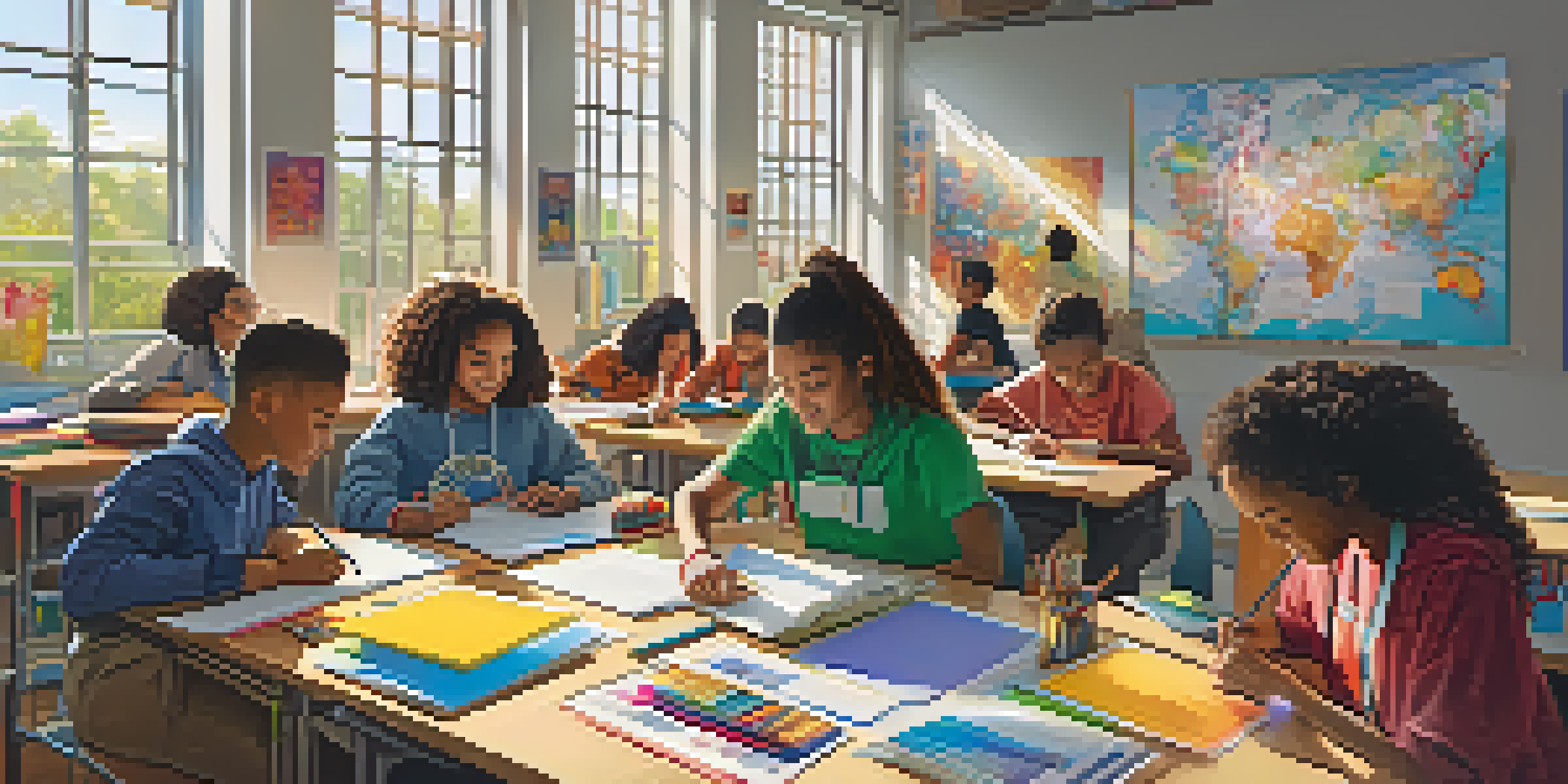How to Implement Project-Based Learning in the Classroom

Understanding the Basics of Project-Based Learning
Project-Based Learning (PBL) is an instructional approach where students gain knowledge and skills by engaging in projects. These projects are often complex, allowing students to explore real-world problems or questions. Unlike traditional learning, where students memorize facts, PBL encourages critical thinking and collaboration.
Tell me and I forget, teach me and I remember, involve me and I learn.
At its core, PBL promotes active learning. Instead of passively receiving information, students take charge of their learning process. This method not only deepens their understanding of the subject matter but also fosters essential skills like teamwork and communication.
To implement PBL effectively, teachers should first understand their students' interests and strengths. This way, projects can be tailored to resonate with students, making the learning experience more engaging and relevant.
Setting Clear Learning Objectives for Projects
Before diving into projects, it's crucial to establish clear learning objectives. These objectives guide both the teacher and students throughout the project, ensuring that everyone stays focused on the desired outcomes. Think of these objectives as the roadmap that will lead students to their destination.

When crafting learning objectives, consider using the SMART criteria: Specific, Measurable, Achievable, Relevant, and Time-bound. This approach helps ensure that the goals are not only clear but also attainable within the project's timeframe.
Engage Students with Relevant Projects
Creating projects that connect to students' lives enhances engagement and investment in their learning.
By setting clear objectives, students can reflect on their progress and understand how their work ties into broader educational goals. This clarity enhances motivation and encourages students to take ownership of their learning journey.
Designing Engaging and Relevant Projects
Creating projects that captivate student interest is key to successful PBL. Start by selecting topics that are relevant to their lives or current events. When students see the connection between their projects and the world around them, they're more likely to be invested in the outcome.
Learning is not the product of teaching. Learning is the product of the activity of learners.
Involving students in the project design process can also enhance engagement. Allow them to brainstorm ideas, choose their project format, and set their timelines. This sense of autonomy can spark creativity and foster a deeper commitment to their work.
Remember that projects should be challenging but achievable. Striking the right balance will help students develop problem-solving skills while preventing frustration that can arise from overly complex tasks.
Creating Collaborative Learning Environments
Collaboration is a cornerstone of Project-Based Learning. Encourage students to work in groups, where they can share ideas and divide tasks based on individual strengths. This teamwork mirrors real-world scenarios where collaboration is essential.
To enhance collaboration, establish clear roles within each group. By assigning specific responsibilities, students can hold each other accountable and ensure that everyone contributes to the project. This structure also helps develop leadership skills.
Set Clear Learning Objectives
Establishing clear and achievable learning objectives provides a roadmap that keeps students focused and motivated.
Additionally, creating a classroom culture that values collaboration can make a significant difference. Celebrate group achievements and provide opportunities for peer feedback, fostering an environment where students feel comfortable sharing and learning from each other.
Incorporating Technology in Project-Based Learning
In today's digital age, technology can be a powerful ally in PBL. Tools like online collaboration platforms, presentation software, and research databases can enhance the learning experience. These resources allow students to connect with information and each other in dynamic ways.
Consider integrating multimedia components into projects. For instance, students can create videos, podcasts, or digital presentations to showcase their work. This not only makes projects more engaging but also helps students develop valuable tech skills.
However, it's essential to balance technology use with traditional learning methods. While tech can enhance projects, ensure that students still engage in hands-on activities and face-to-face interactions to develop a well-rounded skill set.
Assessing Student Learning in PBL
Assessment in Project-Based Learning differs from traditional testing methods. Instead of relying solely on exams, consider using a mix of formative and summative assessments. This approach provides a comprehensive view of student understanding and skills development.
Rubrics can be invaluable in assessing project work. By providing clear criteria for evaluation, students understand expectations and can reflect on their progress. Rubrics also help ensure that assessments are fair and consistent.
Foster Collaboration Among Peers
Encouraging teamwork and assigning specific roles enhances accountability and develops essential collaboration skills.
Encourage self-assessment and peer feedback as part of the evaluation process. These practices not only promote reflection but also foster a growth mindset, where students learn to see challenges as opportunities for improvement.
Reflecting on the PBL Experience
Reflection is a critical component of Project-Based Learning. After completing a project, encourage students to reflect on their experiences, challenges, and successes. This process helps solidify their learning and provides insights for future projects.
Facilitate reflection through discussions, journals, or presentations. By sharing their thoughts, students can learn from each other and gain diverse perspectives on the project. This collaborative reflection strengthens the learning community.

Ultimately, reflection allows students to recognize their growth and areas for improvement. This self-awareness is a valuable skill that will benefit them in all areas of life, making them better learners and collaborators.